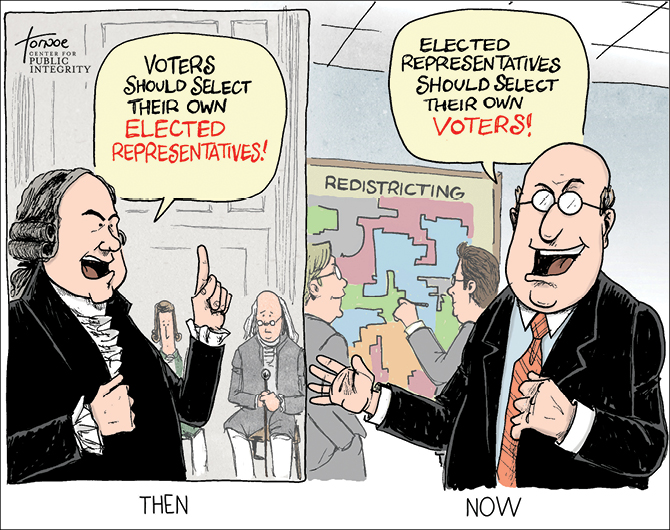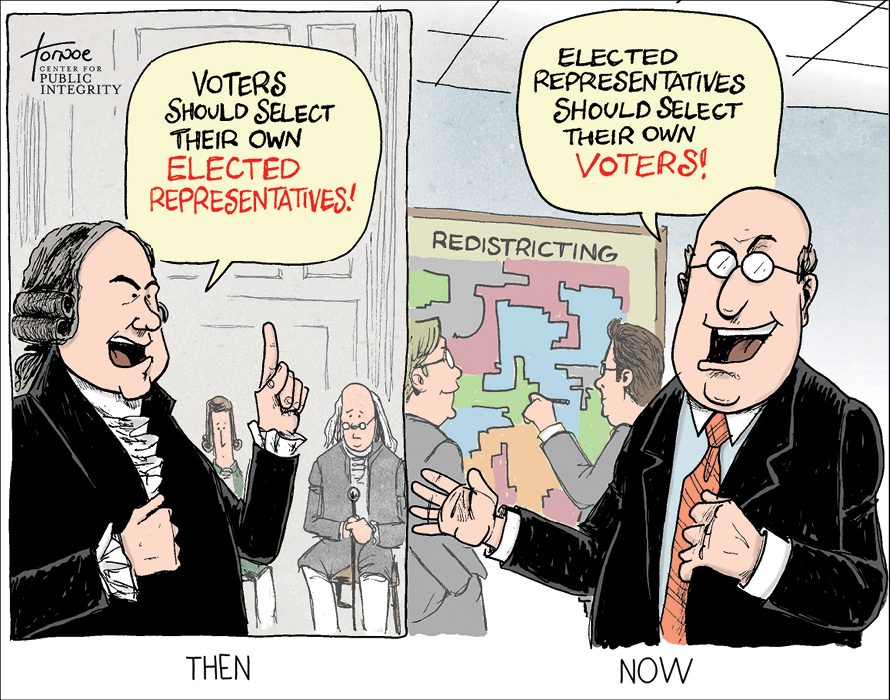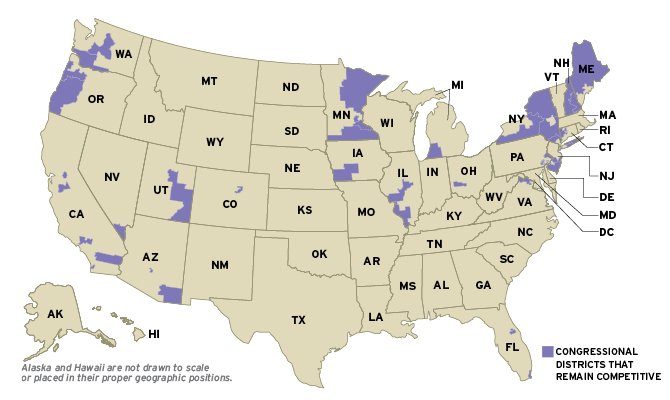Wisconsin has about as many Democrats as Republicans, but you wouldn’t know that from looking at the Wisconsin state legislature. Republicans hold 65 percent of the seats—a bigger majority than Republican legislators have in a solidly conservative state like Texas.
How is that possible? The answer is gerrymandering.
Gerrymandering occurs when politicians draw election district maps in a way that gives their party an advantage. After the 2010 Census, Republican lawmakers in Wisconsin redrew maps that concentrated as many Democratic voters as possible into a small number of urban districts, removing them from other districts that would have otherwise been competitive.








